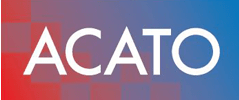Understanding ISO 9001 Certification Costs Across the USA

How ISO 9001 Certification Costs Differ Across the USA: Understanding Price Variations and Key Factors
ISO 9001 certification investments can differ by more than 300% from one state to another in the USA. This cost variation often frustrates quality managers trying to forecast budgets and comply with global standards. In this guide, businesses will discover the main factors driving price differences, a detailed breakdown of fee components, average costs for small enterprises, strategies to reduce certification expenses, and the potential return on investment. Along the way, the ISO 9001 certification cost guide from Acato offers insights into effective budgeting. The sections below cover cost influencers, component breakdowns, small-business averages, optimization tactics, and ROI analysis.
What Are the Main Factors Influencing ISO 9001 Certification Costs in the USA?

Main drivers of ISO 9001 certification costs in the USA include organization size, geographic region, industry requirements, and advisor fees, each shaping the total expense through audit days, travel, and complexity.
How Does Company Size and Complexity Affect Certification Costs?
Larger organizations with multiple sites or complex processes require more audit days and documentation reviews, raising certification fees. Smaller firms with a single location usually incur lower costs due to fewer audit hours and simpler quality management systems.
| Employee Range | Typical Certification Cost | Driving Factor |
|---|---|---|
| 1–10 employees | $4,000 – $6,000 | Single-site audit scope |
| 11–50 employees | $6,000 – $12,000 | Additional audit days |
| 51–250 employees | $12,000 – $25,000 | Multi-site complexity |
| 250+ employees | $25,000 – $50,000+ | Extended audit duration |
Smaller headcounts simplify audit plans and documentation, leading us to examine how location further influences cost.
Why Do Geographic Locations Cause Cost Differences Across US States?
Regional market rates, travel expenses, and local consultant availability drive fee fluctuations across states.
- Higher daily rates in urban centers increase certification fees.
- Remote locations add travel and lodging charges to auditor invoices.
- States with more providers often offer competitive pricing.
Regional fee differences highlight the importance of state-level budgeting ahead of exploring industry-specific impacts.
How Do Industry Sectors Impact ISO 9001 Certification Pricing?
Strict regulatory or technical requirements in certain industries can add training sessions, specialized audits, and documentation reviews.
- Manufacturing often incurs extra process inspections.
- Healthcare adds compliance audits for patient safety.
- IT services require detailed data-security reviews.
Sector-driven requirements extend audit scope and preparation, leading into how advisors and registrars affect total costs.
What Role Do ISO Consultants and Certification Bodies Play in Cost Variations?
Consultants and registrars set fees based on expertise, accreditation, and service bundles, impacting overall expenses through day-rates and package offerings.
| Service Provider | Fee Typical Range | Impact Type |
|---|---|---|
| ISO Consultant | $1,000 – $2,500/day | Implementation support |
| Accredited Registrar | $800 – $1,500/day | Audit and certification |
| Hybrid Provider | $1,200 – $2,000/day | Remote and on-site audits |
Selecting the right mix of consultancy and registrar services prepares businesses for component-level cost analysis.
How Are ISO 9001 Certification Costs Broken Down in the USA?
Certification costs divide into preparation, audit, and ongoing maintenance phases, each carrying distinct fee elements tied to resource allocation and time.
What Are the Typical Preparation and Implementation Costs?
Preparation covers gap analysis, system documentation, and staff training, which build the foundation for a successful audit.
- Gap analysis and internal audit planning
- Quality manual and process documentation
- Employee awareness and auditor-led training
These initial expenses enable organizations to meet ISO 9001 requirements before formal audits begin.
How Much Do Stage 1 and Stage 2 Audit Fees Usually Cost?
Audit fees span two stages: Stage 1 for readiness review and Stage 2 for full certification assessment.
| Audit Stage | Fee Range | Purpose |
|---|---|---|
| Stage 1 Readiness | $1,000 – $3,000 | Document review and planning |
| Stage 2 Assessment | $2,000 – $8,000 | On-site process and system audit |
Understanding audit stage fees helps allocate funds across critical certification milestones.
What Are the Ongoing Maintenance and Recertification Expenses?
Continuous compliance involves surveillance audits and formal recertification every three years.
- Annual surveillance audits (1–2 days)
- Internal audits and management reviews
- Recertification (Stage 1 & Stage 2 repeat)
Planning for these recurring fees ensures sustained ISO 9001 status and avoids budget shortfalls.
What Is the Average ISO 9001 Certification Cost for Small Businesses in the USA?
Small businesses benefit from streamlined audits but face variable rates by headcount and location, with initial investments recouped through efficiency gains.
What Cost Ranges Should Small Businesses Expect by Employee Count?
Employee count directly influences audit duration and documentation complexity.
| Employee Count | Initial Cost Range | Three-Year Total Range |
|---|---|---|
| 1–10 | $4,000 – $6,000 | $8,000 – $12,000 |
| 11–25 | $6,000 – $9,000 | $12,000 – $18,000 |
This breakdown helps small firms align budgets with certification timelines, guiding the comparison across states.
How Do Small Business Costs Compare Across Different US States?
Local market rates and travel needs alter costs for small enterprises.
- California averages 15–20% above national rates.
- Texas offers competitive pricing with urban concentration.
- Florida fees often align with southeastern averages.
State-level cost contrasts reinforce the need for tailored budgeting in certification planning.
How Can US Businesses Optimize and Reduce ISO 9001 Certification Costs?

Cost-optimization techniques focus on leveraging internal assets, hybrid audit models, and competitive quotes to lower expenses without sacrificing quality.
What Are the Benefits of Leveraging Internal Expertise?
In-house quality managers and existing procedures minimize consultant days and external audit scope:
- Internal gap analysis and document drafting
- Employee-led training sessions
- Use of established process controls
Capitalizing on internal resources reduces external fees and accelerates readiness, setting the stage for hybrid approaches.
How Do Hybrid Certification Approaches Lower Expenses?
Blending remote and on-site audits cuts travel costs and optimizes auditor time:
- Virtual document reviews before site visits
- Remote training and gap analysis
- Consolidated on-site audit days
A hybrid model balances thoroughness with cost containment through strategic audit planning.
Why Is Comparing Certification Body Quotes Important for Cost Savings?
Soliciting multiple registrar proposals drives price competition and scope clarity:
- Competitive day-rate comparisons
- Clear definition of included services
- Transparent travel and lodging policies
Price comparison empowers organizations to choose optimal packages aligned with budget and quality needs.
What Is the Return on Investment (ROI) of ISO 9001 Certification in the USA?
Beyond certification fees, ISO 9001 delivers measurable financial and operational benefits that justify the investment through efficiency gains and market differentiation.
How Does Certification Improve Financial Returns and Market Competitiveness?
ISO 9001 certification enhances market access and customer trust, translating into revenue growth:
- Qualification for government and large-enterprise contracts
- Demonstrated commitment to quality boosting sales
- Competitive differentiation in supply chains
These financial advantages often outweigh the initial cost outlay within the first certification cycle.
What Operational Efficiencies Result from ISO 9001 Certification?
Standardized processes and data-driven improvements streamline operations and reduce waste:
- Process mapping fostering consistent outcomes
- Root-cause analysis lowering defect rates
- Continual improvement leading to faster delivery and higher customer satisfaction
Operational efficiencies generate cost savings that rapidly offset certification expenditures.
Adopting ISO 9001 certification across the USA requires understanding cost influencers, budgeting for each phase, and implementing savings strategies. By leveraging internal expertise, hybrid audits, and competitive quotes, organizations can reduce expenses while positioning themselves for stronger financial returns and operational excellence. For tailored guidance on planning your ISO 9001 journey, request a consultation with our quality management specialists.
References
- Acato, ISO 9001 Certification Cost Guide (2024).
- Quality Management Journal (2023).
Frequently Asked Questions
What is the typical timeline for obtaining ISO 9001 certification?
The timeline for obtaining ISO 9001 certification can vary significantly based on the organization’s size, complexity, and readiness. Generally, the process can take anywhere from three to six months. This includes time for initial gap analysis, documentation preparation, staff training, and the two-stage audit process. Organizations that are well-prepared and have existing quality management systems may achieve certification more quickly, while those starting from scratch may require additional time to meet all requirements.
Are there any hidden costs associated with ISO 9001 certification?
Yes, there can be hidden costs associated with ISO 9001 certification that organizations should be aware of. These may include expenses for additional training sessions, internal audits, and potential re-audits if initial compliance is not met. Furthermore, costs related to maintaining the certification, such as ongoing training, surveillance audits, and management reviews, can add up over time. It’s essential for businesses to budget for these ongoing expenses to ensure sustained compliance and avoid unexpected financial burdens.
How can businesses ensure they choose the right certification body?
Choosing the right certification body is crucial for a successful ISO 9001 certification process. Businesses should consider factors such as the body’s accreditation status, industry experience, and reputation. It’s advisable to request references and compare quotes from multiple registrars to understand their service offerings and pricing structures. Additionally, organizations should assess the registrar’s approach to audits, ensuring they align with the company’s needs and expectations for thoroughness and support throughout the certification journey.
What are the common challenges faced during the ISO 9001 certification process?
Common challenges during the ISO 9001 certification process include resistance to change from employees, lack of understanding of the standards, and inadequate documentation practices. Organizations may also struggle with aligning existing processes with ISO requirements, leading to delays in preparation. Additionally, finding the right balance between thoroughness and efficiency during audits can be challenging. To overcome these obstacles, businesses should invest in training, engage employees early in the process, and seek guidance from experienced consultants.
How does ISO 9001 certification impact customer satisfaction?
ISO 9001 certification can significantly enhance customer satisfaction by ensuring that organizations consistently meet customer requirements and improve service quality. The standard emphasizes a process-oriented approach, which helps businesses identify and address customer needs more effectively. By implementing standardized processes and continuous improvement practices, certified organizations can reduce errors, enhance product quality, and respond more swiftly to customer feedback, ultimately leading to increased trust and loyalty from customers.
What are the differences between ISO 9001 and other ISO standards?
ISO 9001 is a quality management standard focused on meeting customer expectations and delivering satisfaction. In contrast, other ISO standards address specific areas such as environmental management (ISO 14001), occupational health and safety (ISO 45001), and information security (ISO 27001). While ISO 9001 provides a framework for quality management applicable across various industries, other standards target specific operational aspects. Organizations may choose to pursue multiple ISO certifications to enhance their overall management systems and demonstrate commitment to various best practices.
Can small businesses benefit from ISO 9001 certification?
Absolutely! Small businesses can greatly benefit from ISO 9001 certification by improving their operational efficiency, enhancing customer satisfaction, and gaining a competitive edge in the market. The certification process encourages small firms to establish structured processes and quality management systems, which can lead to reduced waste and increased productivity. Additionally, being ISO 9001 certified can enhance credibility with customers and partners, opening doors to new business opportunities and potentially leading to increased sales and revenue.
Conclusion
Understanding the cost variations of ISO 9001 certification across the USA empowers businesses to make informed budgeting decisions and optimize their certification journey. By recognizing the key factors influencing expenses, organizations can strategically leverage internal resources and competitive quotes to minimize costs. The potential return on investment from improved operational efficiency and market access further underscores the value of this certification. For personalized assistance in navigating your ISO 9001 certification process, reach out to our quality management experts today.

